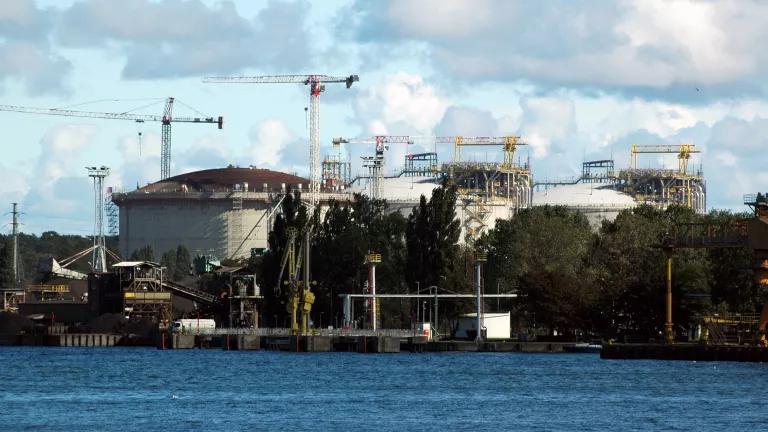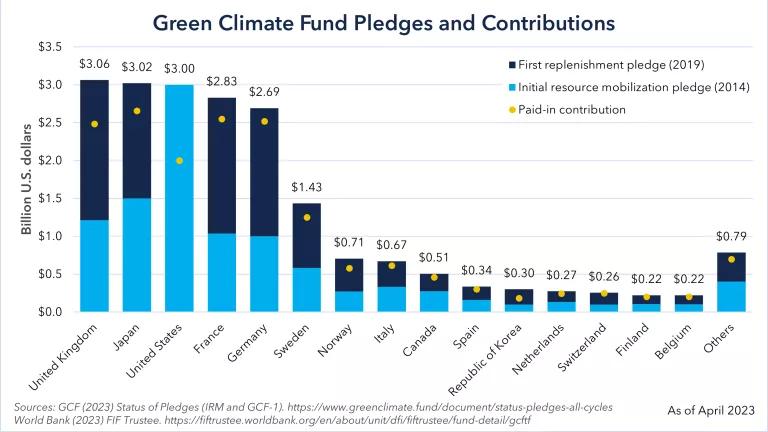Time for Next Step on Climate Risk for Banks
Climate risk is just like any emerging financial risk that bank regulators must start to include in their oversight of banks.
Climate risk is just like any emerging financial risk that bank regulators must start to include in their oversight of banks. For bank regulators to do their jobs and meet their regulatory mandates, climate risk—like mortgage sector or pandemic risk—must be integrated into their oversight frameworks. Otherwise, we risk a banking system crisis reminiscent of the 2008-09 mortgage crisis or worse. NRDC and a coalition of advocacy organizations have been working on a solution that fits within the normal regulatory framework and is ready for swift action.
Based on current mainstream climate science, climate change is accelerating. Climate-related economic impact is already occurring and is expected to increase over the coming years. Banks—and their loan portfolios—face exposure to climate-related risks, from physical damage, such as the damage to borrower business operations, properties, and supply chains from more intense hurricanes, floods, wildfires, and drought (often called physical risk), as well as from the transition to a low-carbon economy, such as decline in value of borrower fossil fuel businesses and reserves (often called transition risk).
To illustrate, the repayment of banks’ loans to oil and gas companies may be jeopardized, as may be loans to coastal real properties subject to increased flooding; more intense droughts may reduce crop production, threatening loans to the agricultural sector; and supply chain disruptions resulting from more extreme weather events may wreak havoc with a broad array of production and manufacturing activities, adversely affecting loans and investments across numerous sectors. One of the bank regulators’ primary jobs is to monitor the safety and soundness of the individual banks they regulate and require these banks to address any excessive risks they find so that the financial health of these banks—and the economy as a whole—is not jeopardized. Science and data are telling us that damage from climate change is occurring now and accelerating, with potentially devastating human and economic consequences. Bank regulators must help their banks identify and address climate risk like any other risk of such significant magnitude.
To jumpstart this process, NRDC has joined with a group of advocacy organizations to provide Federal banking regulatory agencies with specific recommendations about how these agencies can incorporate climate risk into their examinations of individual banks.
This coalition has addressed its comments to four important bank regulators—the Federal Reserve, the Office of the Comptroller of the Currency (OCC), the Federal Deposit Insurance Corporation (FDIC), and the National Credit Union Administration (NCUA). In order to protect our financial system, bank examiners from these agencies routinely review the activities and assets of the institutions they regulate to identify “unsafe or unsound” activities or assets that may create too much risk for these individual institutions and the banking system as a whole. When brought to their attention, banks generally curtail risky activities, dispose of risky assets, and otherwise heed the examiners’ recommendations. These examinations also allow the regulating agencies to gather data about the banking industry as a whole, to better understand the risks to the broader financial system.
As a part of the supervisory process, bank regulatory agencies often issue supervisory guidance that identifies types of activities that regulators believe may create too much risk to an individual bank or to the broader financial system, and provides bankers (and their examiners) with information on mitigating these risks. Although compliance is not legally required, banks generally follow supervisory guidance to the letter.
To carry out their mandates as prudential regulators, bank regulators must include climate risk in their risk assessments, much as they include other bank-specific and systemic risks. They must craft supervisory guidance to inform their banks (and bank examiners) with recommendations for evaluating and addressing climate risk in their portfolios and operations. In our group’s comments, we provide specific recommendations about how the regulators can incorporate climate risk—including specific physical and transition risks—into the categories of risk that they already monitor: credit, market, liquidity, and operational risk. We also explain how climate risk implicates traditional “safety and soundness” concerns, such as loss correlation (likelihood that different assets will all lose value at the same time), high leverage (borrowers that have a lot of debt), and asset-liability mismatch (funding long-term loans with short-term funding sources).
Our group’s recommendations for integration of climate risk into bank regulation map onto the four categories of risk that examiners generally focus on:
- Credit risk: the risk that the bank’s loans will not be repaid on time
- Market risk: the risk that a bank’s investments, such as commodities or securities, will decline in value
- Liquidity risk: the risk that the bank will not be able to sell its assets for cash when it needs to; and
- Operational risk: risk that the bank is subject to in conducting its business operations, such as risk to its facilities, systems, or workforce.
Banks also face reputational, legal, and political risk from climate change, which the report touches upon as well.
Rather than waiting until banks start failing and we perhaps experience a financial meltdown like in 2008-09, bank regulators have the tools to start monitoring climate-related bank risk now. Instead of waiting until after a near collapse that would harm millions and require massive bailouts, bank regulators need to start telling banks what climate risks they are looking for and help them start making the necessary changes now.
Linked in text above, but make easier to find the referenced documents: press release with letter text and signatories; supervisory guidance recommendations.



